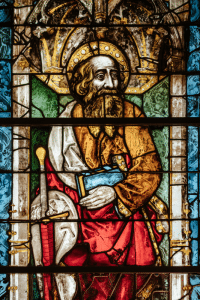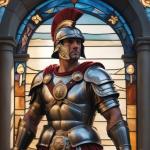Process of Teaching and Leading
For though you have countless guides in Christ, you do not have many fathers. For I became your father in Christ Jesus through the gospel. I urge you, then, be imitators of me. That is why I sent you Timothy, my beloved and faithful child in the Lord, to remind you of my ways in Christ, as I teach them everywhere in every church.
(1 Corinthians 4:15-17 ESV)
There are two forms of discipleship illustrated in these verses.
Tutors
First, there are tutors. Tutors are people who would help the child with the schoolwork. The tutor would be an older youth, who would help the child learn. The person would be about 14-18 years old. The older tutor would take the child to the school, help the child with the instruction and homework. Generally, in Paul’s day, these tutors were slaves. This was a slave’s job to help the child. In modern times, a student might have more than one tutor. The student might have a tutor for math, and another tutor for science, and still a third tutor to help in a foreign language.
Fathers
Second, there are fathers. Fathers would lead the child to adulthood. The father would teach and lead the child in such a way that they could function in society.
That means that there are two different forms of discipleship, with two very different roles. A tutor may not have been someone who was involved in the person’s conversion. Apollos may have been an example of someone who was not involved in the conversion of the people to whom Paul is writing. He would have acted like a tutor. Galatians 3:24 is the only other Scripture verse that uses the word tutor. It says that the law pointed the people to Christ.
So the “tutor” form of discipleship is the form that comes with teaching. There are many Christians out there who can teach what the Bible has taught them. There are many Christians who can teach others what they have learned. Teaching is the easiest form of discipleship, but it is necessary. This form of discipleship is indirect and does not lead to multiplication. Instead, it leads to strengthening. The reason is that one person can be “tutored” by several people. For example:
Apollos — Paul
| |
Disciple
The other form of discipleship, the “father-son” model of discipleship comes as one Christian leads another person to Jesus Christ. Once a person becomes a Christian, if you were involved in that person’s conversion, you become in essence their father. This is what Paul is talking about. He says that there were some who came to Christ under his work. So Paul intends to take the time to lead these new Christians in their walk with Christ.
Paul says that Timothy should follow Paul, as Paul follows Christ. So we see a process of discipleship here that leads to multiplication.
Christ —> Paul —> Timothy —> another person
Every one of us is somewhere on this line.
There is a process of teaching and a process of leading. Both of these processes are necessary in order for Christians to grow. You and I have different people who are tutors and fathers to us. You and I have different people to whom we are tutors and fathers.
Photo by Samuel Zeller on Unsplash


















